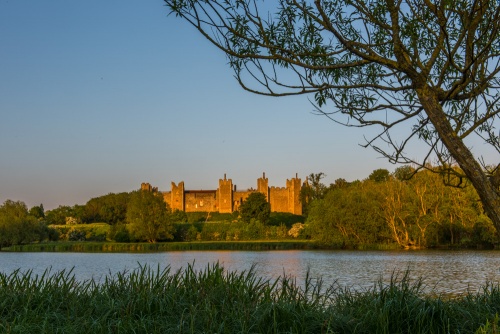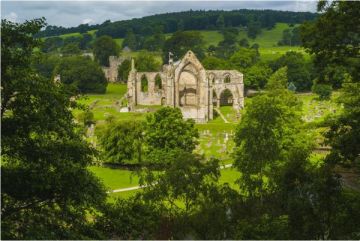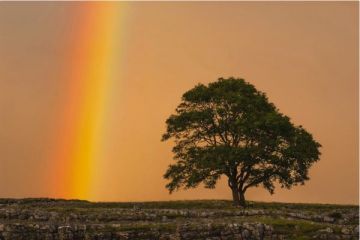
Suffolk is blessedly ignored by most tourists to the UK, a fact which local businesses might not appreciate, but which offers a great opportunity for those travelers bright enough to get off the beaten track and explore this largely agricultural county. To describe the landscape in one word, you'd have to call Suffolk "flat", though perhaps a kinder description would be to say that it has gently rolling meadows and peaceful valleys.
One of these valleys is the Stour, beloved of the painters Thomas Gainsborough and John Constable, both of whom painted the area frequently. The area of Dedham Vale featured so frequently in the latter's work that is is known as Constable Country. Gainsborough's birthplace in Sudbury is now preserved as Gainsborough House, where visitors can explore a museum devoted to the painter's life and view the largest collection of his work in England. In the town is St. Gregory's church, which dates in part to the 7th century.

Suffolk is blessed with a wealth of wonderful parish churches from the late Middle Ages, when the region's economy soared due to the success of sheep raising and wealthy wool merchants bestowed their largess on ecclesiastical building projects.
One of the finest "wool churches" is at Long Melford, where, fittingly, Holy Trinity is the longest parish in the county at about 250 ft. The exterior is a magnificent example of flush-work and the 15th century stained glass is superb. Kentwell Hall, on the edge of Long Melford, is a moated red-brick Tudor manor that hosts regular Tudor "living-history" events.
If any place in Suffolk can claim to attract tourists it is Lavenham, where visitors come for the beautifully preserved architecture. There are over 300 listed buildings in the town, most of them authentic medieval houses exhibiting a range of styles, from half-timbering to elaborate pargeting (a kind of raised decorative plasterwork often seen on the gable ends of houses). The superb 16th century Guild Hall houses a local history museum.
Orford Castle is a former royal fortress built in the 12th century by Henry II for coastal defenses. The well-preserved remains are composed of a strong central keep with three sturdy towers soaring about 90 feet above the surrounding village. By comparison to the solitary keep of Orford, 12th century Framlingham Castle has 13 towers in an imposing curtain wall surrounding the castle.

Bury St. Edmunds was home to a prosperous abbey in the Middle Ages, but now the abbey ruins lie in crumbling splendour within a lovely garden. In contrast, the 16th century Cathedral of St. Edmundsbury is very much in repair, and the hammerbeam roof is excellent.
Just 3 miles from Bury is Ickworth House, the idiosyncratic creation of the Earl of Bristol in 1795. The central feature (literally) is a massive oval rotunda. The Italianate interior is set off with excellent furniture, silver, and fine art, including paintings by Titian and Gainsborough, and the house is set in parklands designed by the ubiquitous Capability Brown.
Finally, we must mention the Suffolk Coast, an intriguing mix of popular resorts, like Lowestoft and Southwold, and mile upon mile of peaceful wave-washed shore. The Suffolk Heritage Coast runs from Felixstowe in the south almost to Lowestoft, and for most of that way the long-distance Suffolk Coast Path follows the sound of the surf, providing enjoyable, if sometimes windy, walking without the crowds.








